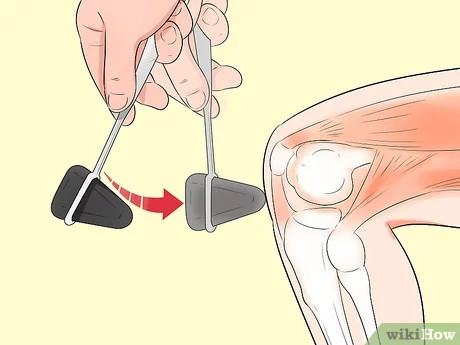
"Does this hurt?"
"How about this?"
"Okay now move this way and tell me if this hurts."
Does this all sound familiar when you go to a clinician who is evaluating for pain or an injury? Have you ever wondered what it all means and WHY they are doing those things? Well, let's learn why.
After your clinician asks you what feels like 100 questions and gets an in-depth history, they perform a physical exam. The history-taking is extremely important and can absolutely guide us in the right direction to help formulate a proper diagnosis. That's why an initial appointment should NEVER be a quick 5-minute thing. Also, this is why the idea of "Can you just check X real quick?" should not be a thing. But, I digress.
Back to the physical exam. The physical exam typically includes a combination of active and passive range of motion, a neurological screening, a strength assessment, and orthopedic tests. Depending on the affected area, there may be more or less involved. For example, when performing testing for headaches, vertigo, or anything brain-related, we include a cranial nerve exam. The combination of ALL of these test results and the history then results in the diagnosis. Of course, imaging could be used as well.
Range of Motion
The range of motion testing provides insight into how much the patient can move, how much pain it inflicts, and the quality of the movement. When there is pain, the range of motion can become affected actively (meaning the patient is doing the movement) or passively (meaning the clinician is moving the affected area through the range of motion). When and where the pain starts throughout motion also provides input into what structures are affected and how the stress imposed is affecting tissue. Finally, the quality of the movement, whether it's an injured area or not, helps provide better information into how the patient moves and how that may be resulting in upstream or downstream issues. For example, how well does the patient's hips move in relation to their lower back pain and does the lack of control of movement or the lack of joint range of motion affect the injured area?
Neurological Exam
The neurological exam is quite important for many reasons whether it is for a neurological-based condition or not. The neurological exam consists typically of reflex testing (the reflex hammer), muscle strength testing (weakness), sensory testing (hypo- or hyper-sensitivity), balance and proprioceptive testing (dizziness/feeling unstable), cranial nerve exam, and occasionally tests for red flags, aka very serious issues. The neurological testing can provide information regarding SERIOUS things such as stroke, cauda equina, issues with the brain, or severe neurological deficits. These tests are what most people consider odd, like hitting you with a reflex hammer, opening your mouth wide open, moving your eyes back and forth following a pen, shining a bright light in your eyes, etc. But, although somewhat goofy, important tests to perform provide information on brain, nerve, or discogenic issues.
Orthopedic Exam
Orthopedic tests are special tests that have been studied and determined to help provide insight into which anatomical structures have been affected or injured. Now, these aren't perfect and some can make the case that they should be thrown away entirely, however, we are not in that camp. These tests help us rule in or rule out certain diagnoses. They stress the affected areas and help determine whether there is pain, clicking/popping, or weakness. These tests are something we as conservative management providers study extensively and are tested on extensively. Again, why it's important to not rush any part of this. This can be the difference between you have a completely torn rotator cuff or a partial strain. Between a torn ACL or a sprained ACL. All important things take time.
Conclusion
After reading all this, it's important to understand that there is a multitude of different things that can be done and in many different orders and there is no gold standard for any of this. Some providers may need waaaay more information or need waaay less. That is why it is called PRACTICE. Everyone does it differently and every patient may need something different. We strive our best to systematize things to ensure we are capable of providing the same results to all the we help. If we need more tests or questions answered to provide care, we ensure our patients we refer them to the best possible clinicians or tests. Helthcare is a beatifully confusing thing and our goal is to provide information to all of our patients to ensure they have the best experience they can. When people don't understand things, a slew of emotions can occur and we want to eliminate any possibility of that happening.
If you're looking for a DIFFERENT healthcare experience, where we take all the time we need and provide you with all the information and education you could want, our office is for you. The first steps are to schedule the 30-minute FREE Discovery visit at strengthchiro.com
We look forward to helping you!
-Dr. Cameron Gholampour
